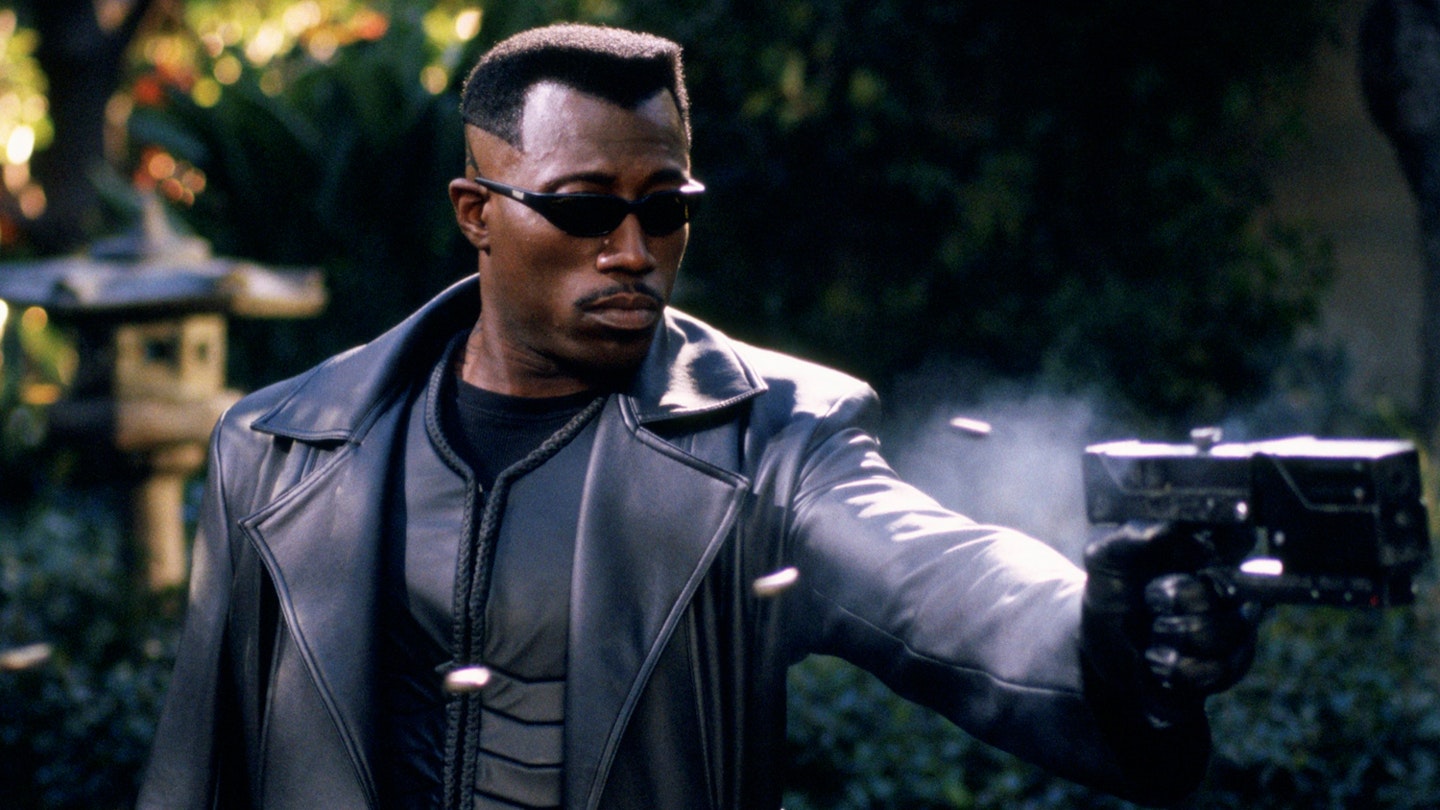Here’s a stake to the heart for Gen X-ers and older Millennials: it is, somehow, 25 years since Wesley Snipes’ Blade first sliced, stabbed, blasted, chopped and burned his way through a cabal of vampires dead set on turning the whole world undead.
Everyone likes Blade. Blade is brilliant. It’s splashy, gory, and enormous fun. Snipes is absolutely spot on as the part-human, part-vampire avenger. But two and a half decades on, Blade strangely remains more a cult favourite than an untouchable piece of the superhero canon. Watch it again, and Blade now looks a couple of decades ahead of its contemporaries. It anticipates not just the techno-goth stylings and cyber-paranoia of The Matrix, but the box office juggernaut which Marvel – and this is a Marvel film, let’s not forget – would turn into.
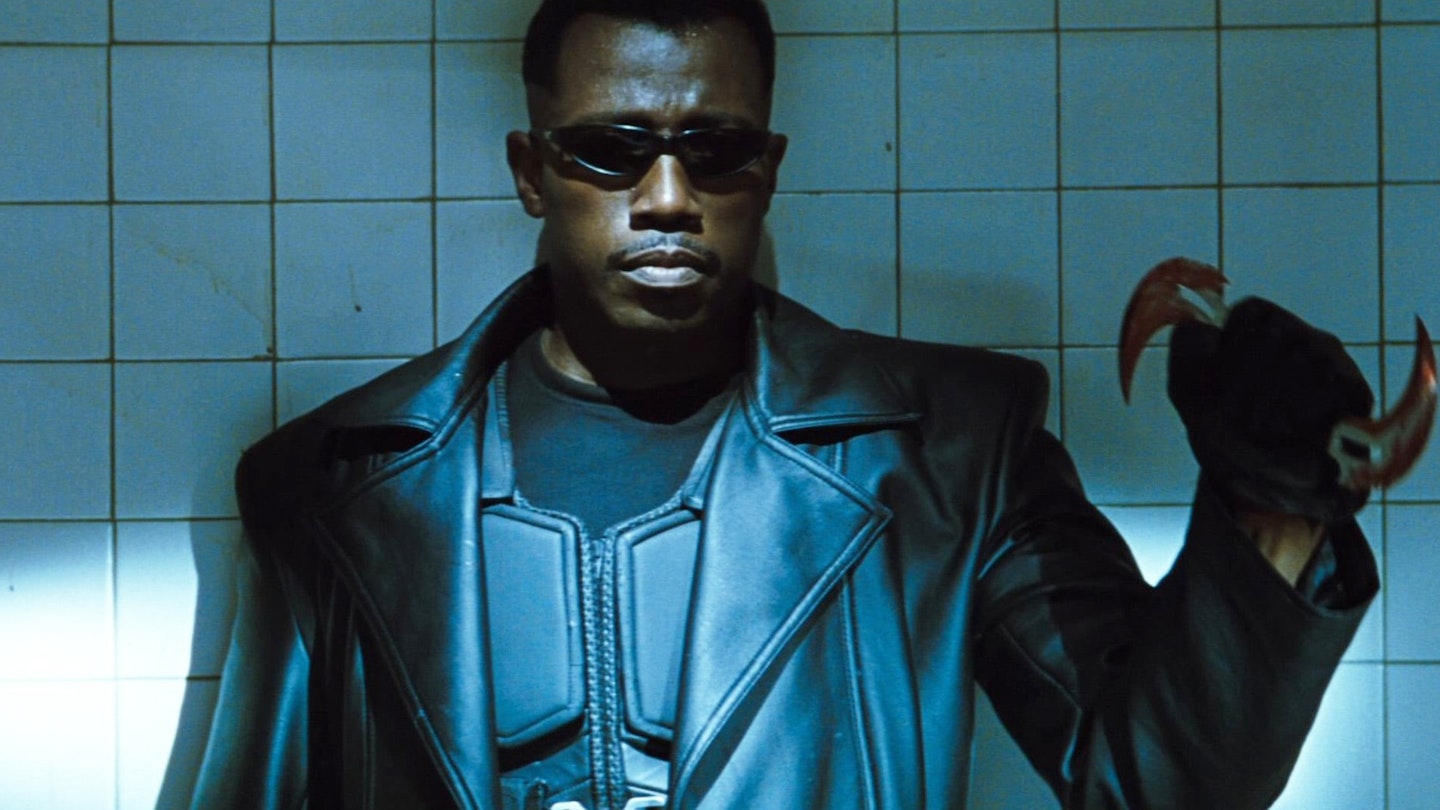
Let’s start with the obvious stuff. Here we’ve got an emotionally-repressed badass who stomps about in leather and tiny sunglasses, roundhouse kicking his way through goons and being referred to as The Chosen One almost an entire year before Neo, Trinity and Morpheus got going. Plus, there’s an added layer of wariness and wonder at the power of tech as the internet became a fact of life rather than an intriguing idea. The Matrix is both a prison and a sandbox; in Blade, new advances allow vampires to be cured through gene therapy while also allowing them to decode a document with which they can wake up the Blood God and subjugate humanity forever. In both cases, you win some, you lose some.
And Blade, like The Matrix, comes with an undercurrent of repulsion at the streak of decadence and complacency which both films see running through America as the millennium approaches. In The Matrix, most of the population live in comfortable bliss, unaware of the fact they’re slowly being sucked dry. In Blade, the ones doing the sucking-dry are club kids who embody an end-of-the-century moral rot, only chasing the next high.
The film is a prime example of how Marvel could nail a character first time.
Let’s not forget, either, that Blade was the very first film from ‘Marvel Enterprises’, as it was then titled. The idea of ‘a Marvel film’ didn’t exist yet, but there are signs of what was to come all the same. Most pertinently, the film is a prime example of how Marvel could nail a character first time and spin several sequels off it – a principle it would put into practice later, as it turned into a pop cultural juggernaut on the back of getting Tony Stark just right in Iron Man.
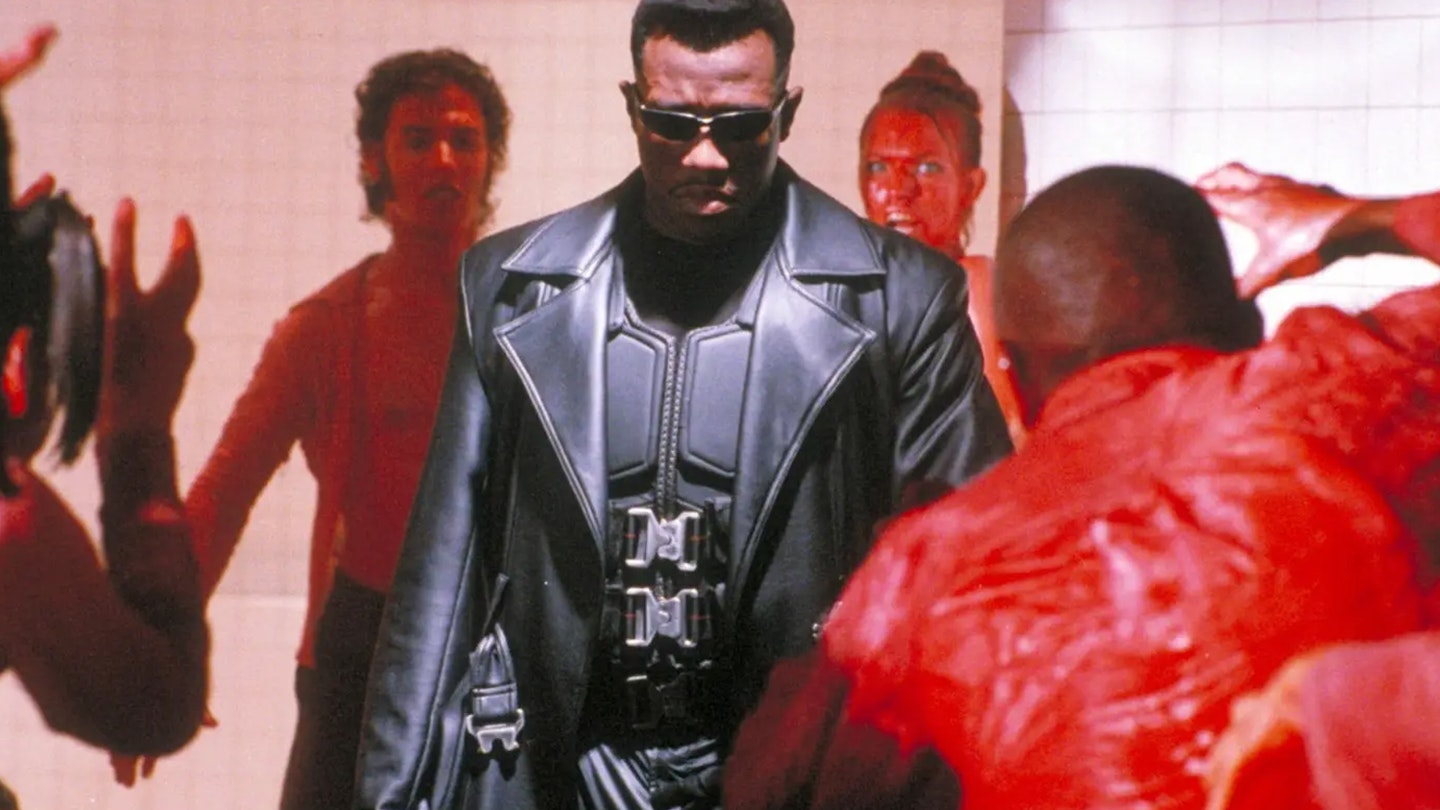
The first time we meet Snipes’ Blade, he’s fully-formed – arriving in the full leathers and body armour get-up. He sends the underworld’s revellers scurrying out of their debauched blood-rave in an old abattoir, going through his full repertoire of swordplay and martial arts. He’s not even that bothered about it. He’s not even breaking sweat. Swish, shhhhing, splat: vampire after vampire is dispatched with complete nonchalance. Then, the piece de resistance: Blade stands at one side of a circular chamber, and boomerangs a throwing knife all the way around so it takes out three big lunks before he catches it again and grins. He shoots Quinn with two silver bolts, pinning him to the wall. Big clenched first in triumph. He sets Quinn on fire and leaves a flatcap-wearing civilian who got honeytrapped into the club to take the heat. The character is perfectly captured in the first five minutes.
Since superheroes weren’t box office dynamite at that point, the film is pitched as much as a vampire film as it is a comic book actioner. Blade makes clear very early on that he’s no Van Helsing, and the vampires of the ‘90s aren’t your hammy Hammer Horror types. “Crosses and holy water don’t do dick,” Blade snaps at Dr Karen Jenson, the human he’s just saved, “so forget what you’ve seen in the movies.” He’s very much a launch-through-plate-glass-window first, ask questions later kind of dude too. “Is all that necessary?” Jenson asks as Blade smashes a police officer’s face through the carefully curated tiki bar in her apartment. Probably not. But, mate, come on: he’s Blade. You’re lucky you’ve still got walls.
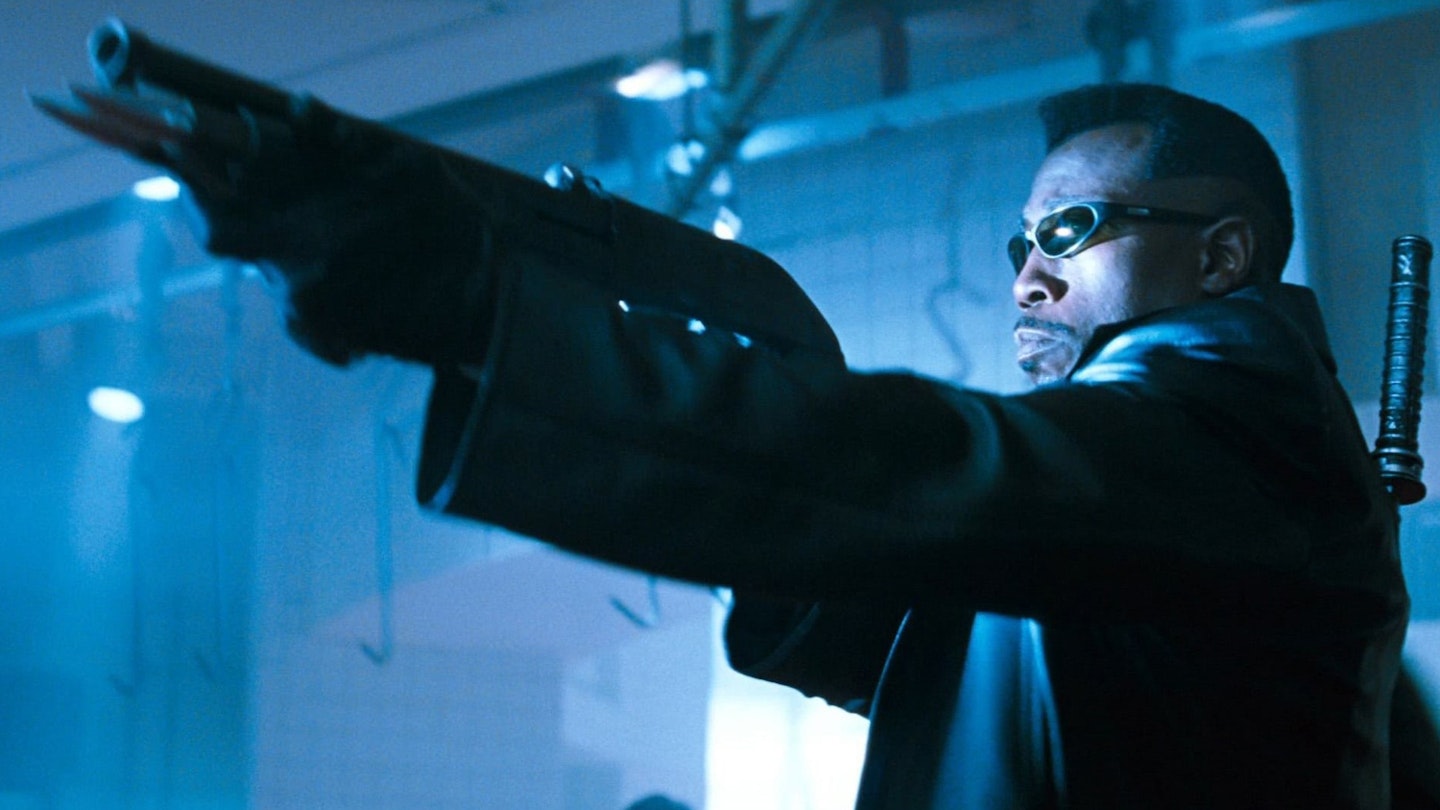
As serious as he is, though, there’s a streak of very recognisably Marvel humour laced through the gunplay and gnarly, bloody explosions. (Really, Blade is a film which takes great delight in bursting people with the most disgusting practical effects possible. The bit where fallen vampire kingpin Dragonetti is forced to look into the sunrise and is flayed apart by it is, for me, on a par with the melting Nazis in Raiders Of The Lost Ark.) Deacon’s henchman Quinn is a prime example. Through successive fights with Blade, he keeps losing bits of his body – “Look what he did! He took my hand again!” – and later gets giddy at the idea of becoming an eternal blood deity. “I’m gonna be a naughty vampire god!” he giggles.
Blade gets the very best lines though. At a time when DC’s Batman Forever had Arnold Schwarzenegger’s Mr Freeze clunking through groansome one-liners (“Ice to see you!” etc), Snipes’ Blade dealt in genuinely cold kiss-offs with a slightly surreal twist. He saves his finest work for the final showdown with Deacon Frost: “Some motherfuckers are always trying to ice-skate uphill,” he says, before launching half a dozen needles into the villain’s face. Naturally, Deacon goes all Violet Beauregard before exploding in quite spectacular fashion.
There are some aspects of Blade which remains deeply, unmistakably ‘90s. Deacon, the new-school vampire who wants to shake apart the detente between the aristocratic older vampires and the human world, is the kind of villain who could only really have made sense in 1998. He listens to drum and bass in a library – because he simply does not give a damn – with a style roughly summed up as, ‘Brian Molko from Placebo, but wearing a leather blazer’. The dominance of house music and rave culture as a shorthand for depravity seems quaint these days too.
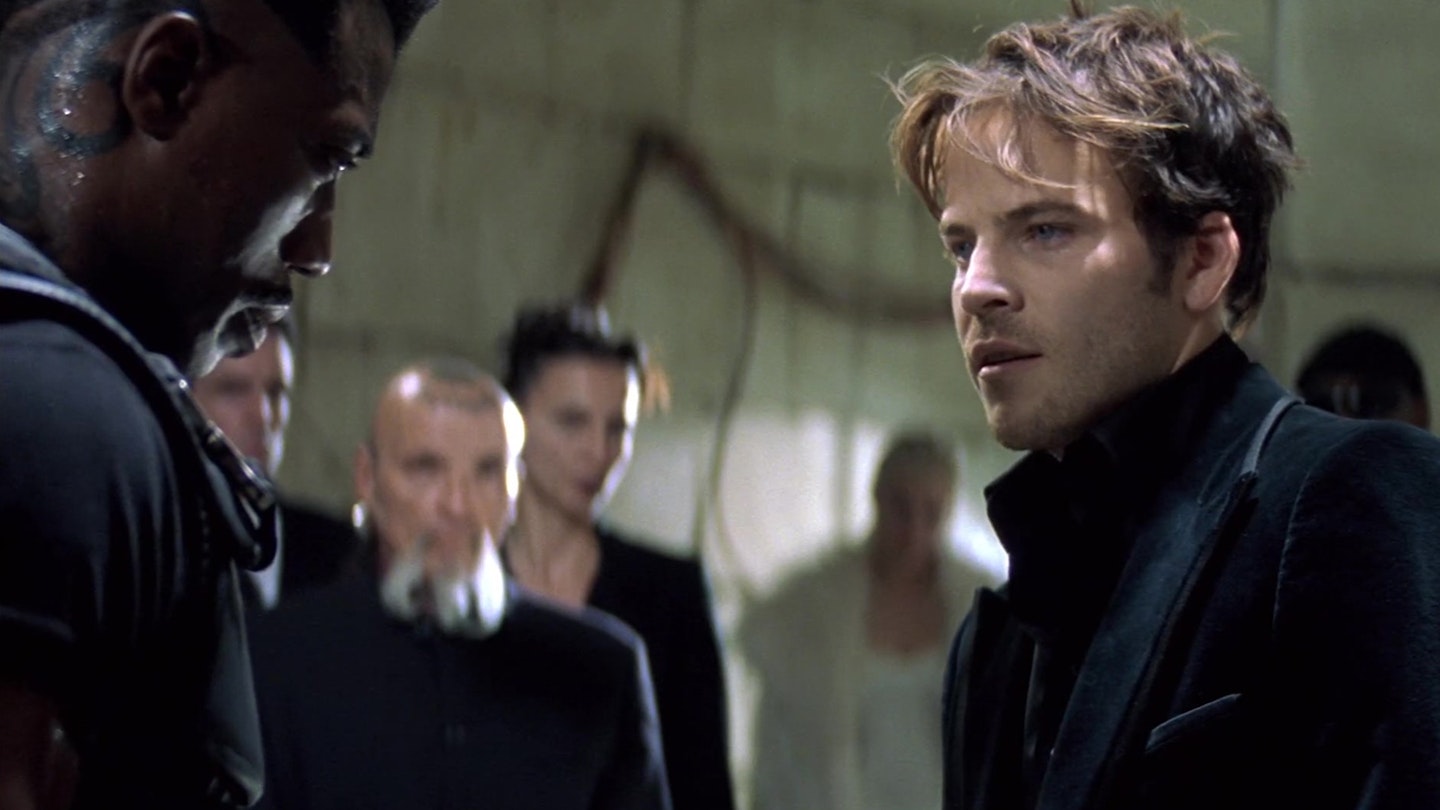
But there are so many parts of Blade which are ahead of their time too. Even though the film is less explicit in its exploration of race than Marvel’s later efforts in Black Panther, there’s still huge power in building a franchise around a Black superhero. The film works that angle subtly, but it’s easy to read between the lines. Blade warns Jenson, for instance, that they can’t trust the police because they’re part of a system rigged against them: “They own the police – you have to understand, they’re everywhere.”
Nobody exactly forgot about Blade in the quarter-century since his first outing. But it feels right that now we’ve seen the world which he raced towards, sword drawn and wraparound shades firmly clamped to his face, this lethal but wounded daywalker should get his day in the sun.
